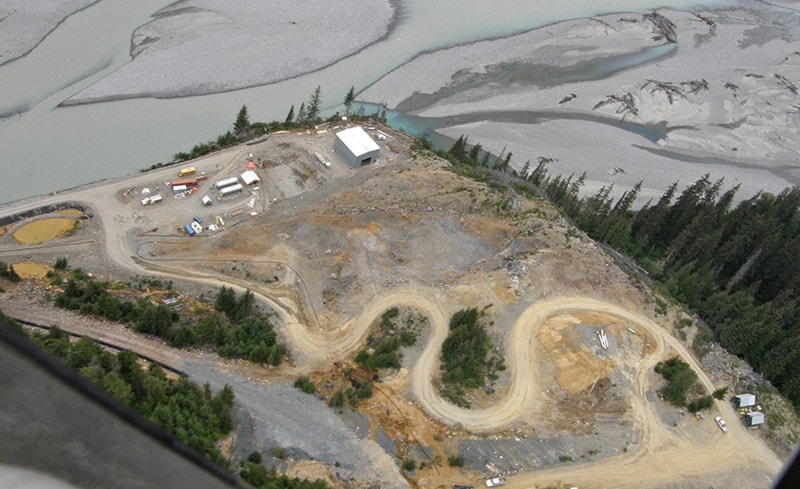Chieftain Metals is making headway with plans to reopen the Tulsequah Chief mine south of Atlin, B.C.
The Toronto-based mining junior scooped up the property last fall after its predecessor, Redcorp Ventures, went bankrupt.
The controversial project has faced heavy opposition by conservationists and the Taku River Tlingit First Nation. They had environmental concerns about how the ore would be delivered to market.
Chieftain has resurrected plans to build a 100-kilometre road from the mine site to Atlin. Redcorp proposed a similar plan but then decided to barge the ore down the Taku River to Juneau.
So far critics have been quiet about the new plans.
But the next six months may prove crucial to the project, said company president and CEO Victor Wyprysky in a telephone interview. During that time, the company hopes to finalize agreements with the Taku River Tlingit.
Last May Chieftain and the First Nation signed a letter of understanding to work out a deal that would offer jobs, contracts and other compensation to First Nation members.
“We’re taking great care to explain to the community how the mine project will unfold,” Wyprysky said.
The company is currently commissioning a water treatment plant which will be used to clean up pools of acidic water left from the historic mine when it operated in the 1950s.
“That’s something that had been a sore point in the region for some time,” he said. It’s also a requirement imposed by British Columbia for building a new mine.
As well, the company needs to raise more than $300 million to build the mine. Wyprysky recently visited Beijing and Hong Kong to chat up potential investors.
Drill work this past summer extended the mine’s expected life beyond a decade, he said. The company hopes to complete a bankable feasibility study by the spring.
The project would initially be powered by diesel generators, but Chieftain has plans to build a micro-hydroelectric facility that would offset emissions.
If Chieftain’s plans become reality, the mine would open by the spring of 2014 and employ approximately 300 people.
The Taku River Tlingit First Nation was not available for comment.
Contact John Thompson at johnt@yukon-news.com
